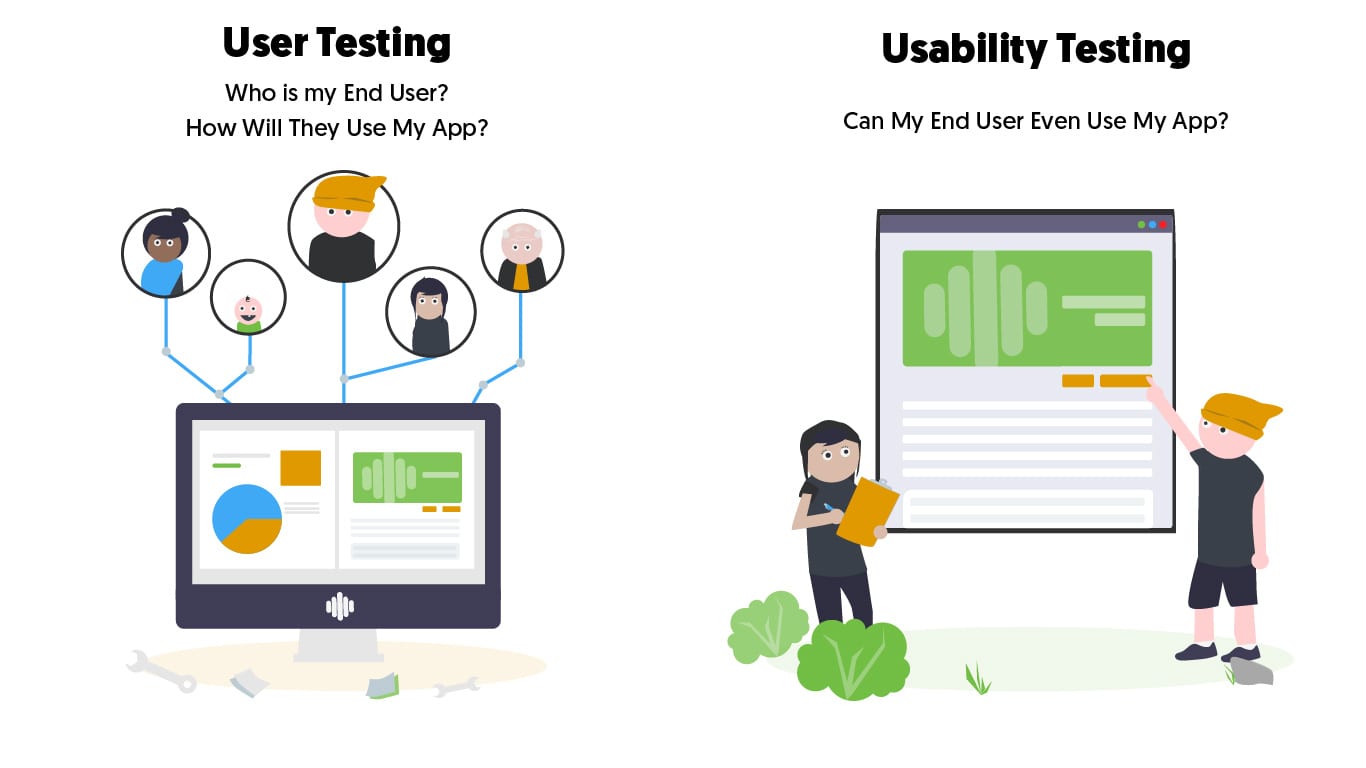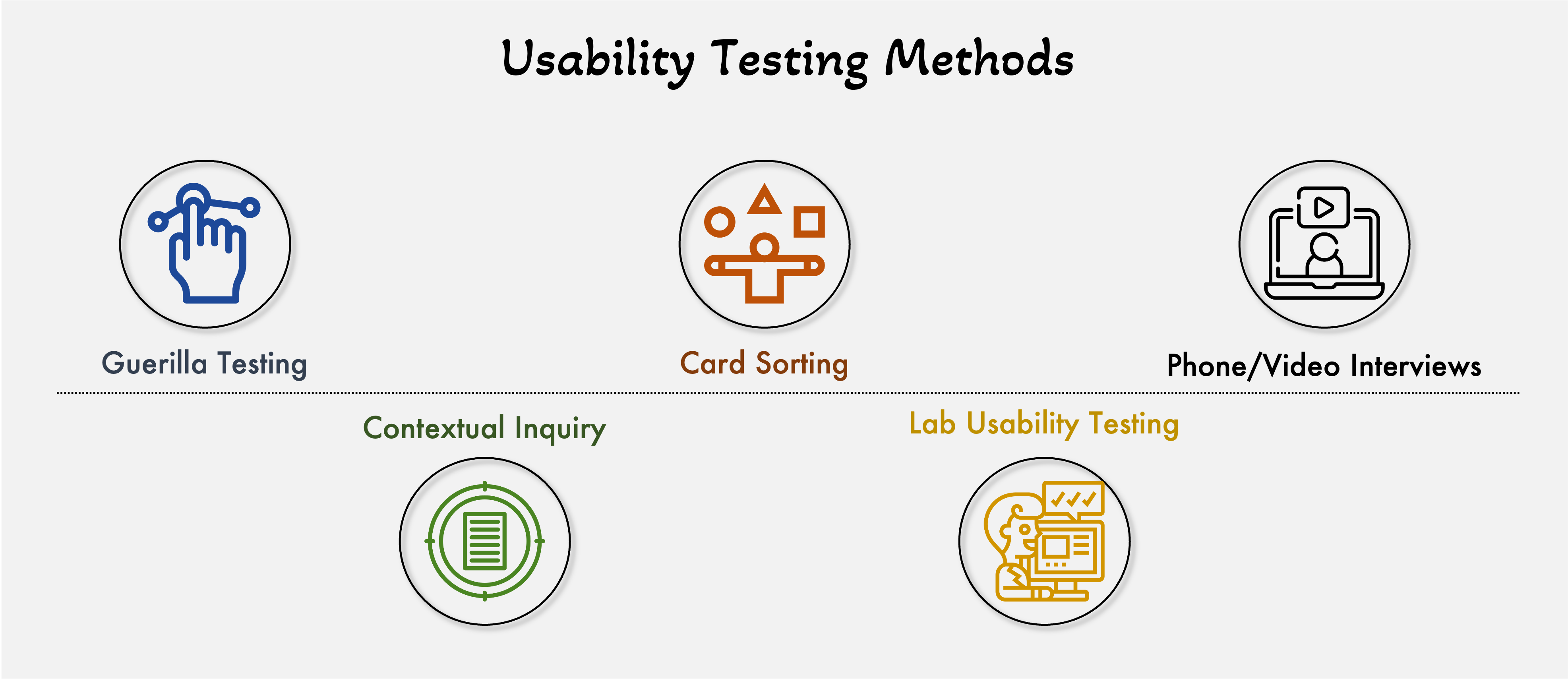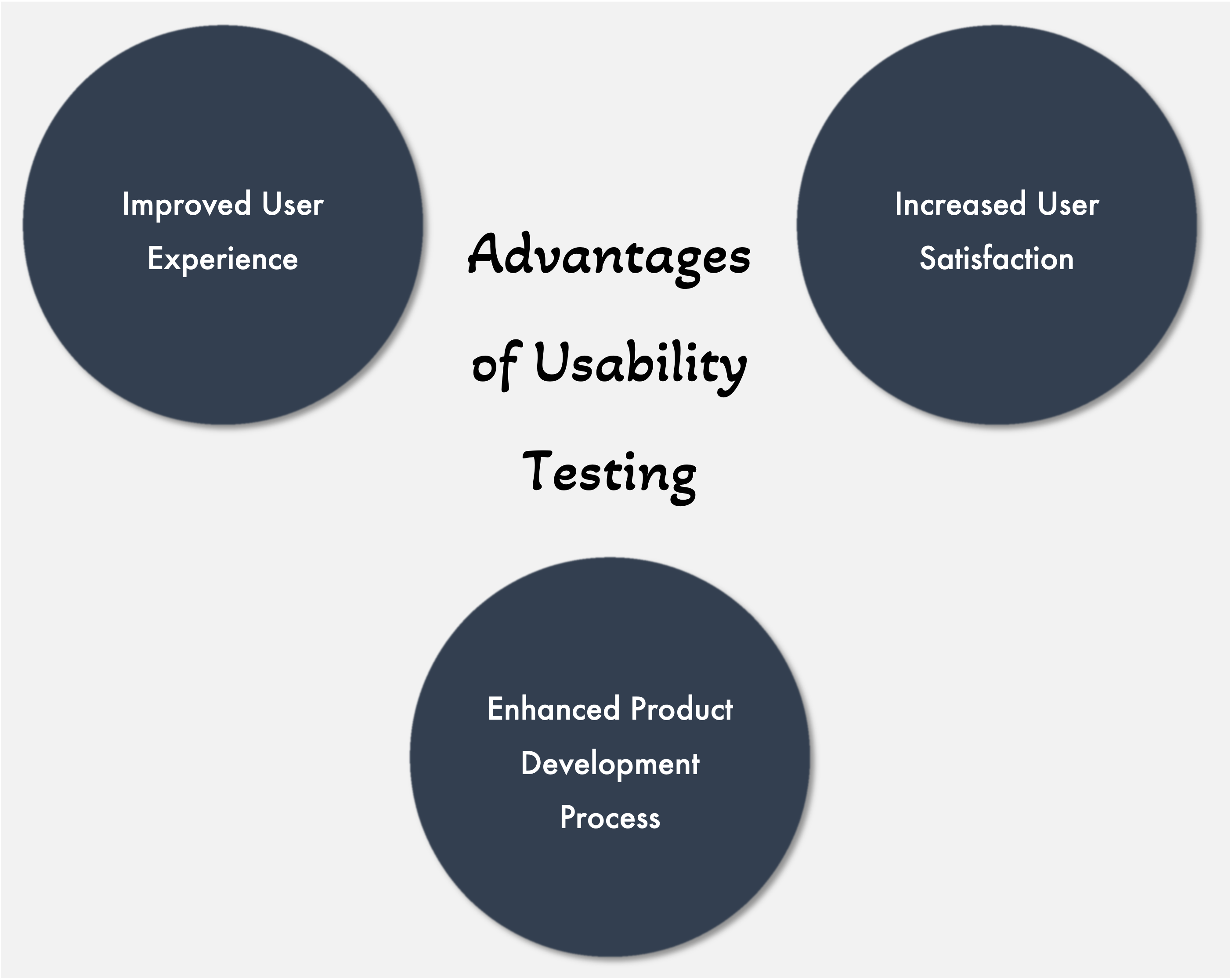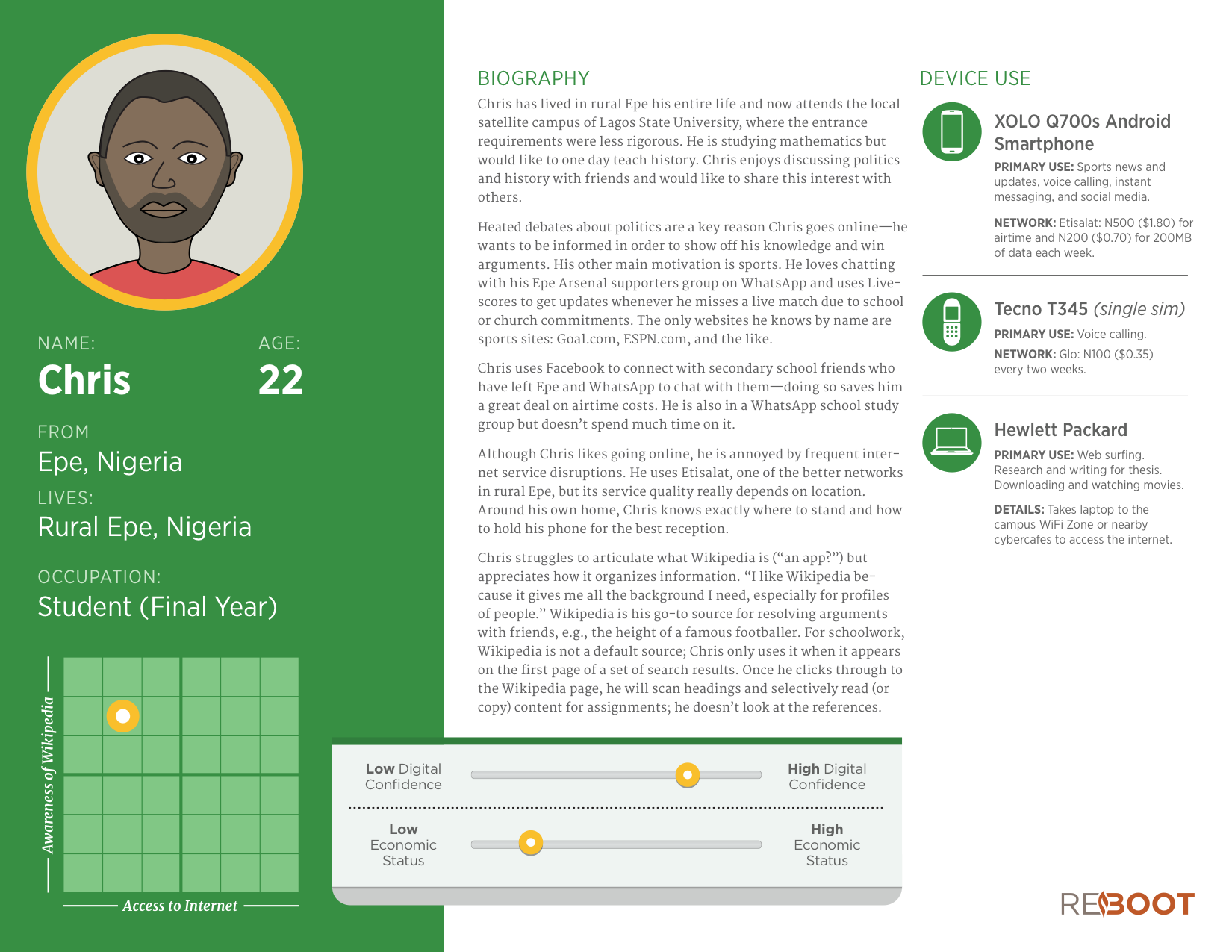In the design of any product or service, the needs of the end-users always take precedence. The field of UX design puts great emphasis on understanding and meeting the needs of the target audience, and for the right reasons. It is the perception of the users, their level of engagement with a product, and their satisfaction with a design that truly define its success. Therefore, it is impossible to create a design without getting the feedback of actual users.
Over time, UX design experts have developed a number of strategies that can help in understanding the needs of the target audience. Processes such as user testing ensure that the design process focuses on the needs of the users. However, it would be wrong to say that a design is free of problems, errors, and concerns for the users.
It becomes important to conduct strategic studies in order to understand the usability problems, making sure that the users get the best experience. This is where usability studies and tests come into play. Usability testing is a comprehensive process that has been tried and tested over the years. It has evolved over time, gaining the trust of usability experts.
In this article, we introduce the concept of usability testing along with the different types of tests that can be performed to understand the areas of improvement. We discuss the advantages of conducting usability testing and answer important questions about when to conduct such a test. We also list down some best practices so you can make the most out of this practice.
Read along as we unpack this critical and essential part of any design process.
Introduction to usability testing
For any design, whether in the digital or the physical world, it is important to gather feedback from the users, understand the usability issues, find areas of improvement, and create useful solutions. This is why the evaluation of any design is critical. Conducting usability studies is one of the most effective UX evaluation methods. And collaborating with a UX design company ensures usability testing surfaces the highest-impact issues early and ties fixes to measurable product outcomes.
What is usability testing?
Usability testing is an evaluation technique widely used by designers and researchers to assess a product or service. The idea is to test the product in a real environment with real users to identify the key issues and gather the feedback of customers.
With the help of a well-thought-out usability test, designers and researchers can find key issues with a product, service, or website usability. When the users interact with a design in the real world, that is when the good and bad aspects come to light. Designers can observe the behavior of users as they use a product and try to accomplish their tasks, gathering valuable insights about overall visibility along the way.
Importance of usability testing in creating successful designs
There are several advantages of conducting usability testing. On the one hand, it helps in making the voice of customers a part of the design process. On the other, it provides designers with a different perspective, highlighting key aspects of the products that might go unnoticed. Some of the key benefits of a usability test are as follows.
- Usability tests provide a strategic way to gauge user experience and understand the needs and frustrations of the target audience.
- To a great extent, usability testing determines whether a product will be successful in the market when real users interact with it.
- These test sessions help in identifying and highlighting usability problems, along with the major concerns for users while accomplishing certain tasks.
- Methods for specific types of designs, such as website usability testing, enable designers to find focused areas for improvement.
- Overall, the findings of usability studies help in creating user-friendly products with a promise to make the lives of the end-users easier.
Distinguishing usability testing from user testing
The design process includes a series of steps and a number of methods aimed at understanding and evaluating the needs of users, the state of the market, and the resources at the disposal of an organization. The findings of all these methods, together, help in creating effective and useful designs. However, with so many terms and methods, it is critical to understand the difference between different techniques in UX design. One common confusion is between usability testing and user testing.
Is usability testing different from user testing?
Usability testing refers to the evaluation of the performance of a product or service, to highlight its good and bad aspects. User testing is conducted to identify prospective users and understand their needs to align them with the features of a product or service.
User testing is a type of user research conducted at the initial stages of any design process. The idea behind this practice is to understand the needs, habits, and attitudes of the target audience. When the idea of a website, product, or service is proposed, it is important to understand whether there really is a need for this idea in the market, and will the target audience find it useful. This is where the findings of user research are extremely helpful.

User Testing vs Usability Testing (Loud Canvas)
User testing, on the other hand, is an evaluation method that is conducted when the design process has actually begun. When designers and product developers start creating the product, they keep going to the users at different stages to get their feedback. The findings from user testing help in highlighting the concerns of users such as bugs in applications, website usability issues, gaps in the user journey, etc.
In short, user testing makes the case for a product to see whether it is a good idea to move ahead with the design process. Usability testing ensures that the design is taken forward and created in a way that the ends of the target audience are met at every stage.
Different types of usability testing
There is no single standard way of conducting usability tests. The availability of resources, the goals of a product, and the target audience call for a range of methods for usability testing. For example, the choice of methods would be different when working on web design as compared to that of mobile applications or physical products. Designers employ different methods to run usability tests and gather valuable information from the users. Additionally, with the world becoming fast-paced, it is also important to give attention to remote usability testing methods where insights can be gathered in an efficient way.
What are the different types of usability testing?
There are different methods of usability testing.
- Guerilla testing
- Contextual inquiry
- Card sorting
- Lab usability testing
- Phone and/or video interviews
We discuss some of the main usability testing methods in this section that can be applied to improve product, service, or website usability. The methods discussed below do not constitute an exhaustive list. There are several other methods that can be used for the evaluation of a design based on the goals and objectives.

Types of Usability Testing Methods
Guerilla testing
Guerilla testing is a fast, informal usability testing method that can help in getting quick insights about the behavior of users, that too by spending fewer resources. This type of test can be conducted in any informal setting, such as a coffee shop, where the users quickly interact with a product for a few minutes, try to accomplish a goal, and the designers learn about the usability issues along the way.
Contextual inquiry
Contextual inquiry is one of the most reliable usability testing methods. The idea behind such a usability test is that the users get to interact with a design in their natural environment. In other words, the users do not visit a lab, but the designers go to the users and observe their behavior as they naturally interact with a product or service.
Card sorting
Card sorting is one of the most effective strategies for website usability testing. In this method, the users work as information architects and designers, where they present the design in a way that makes the most sense to them. For example, the users may be presented with different categories and products during a testing session. As they organize and reorganize these items (or cards), the designers can learn their behaviors and then create the knowledge network in a similar, familiar manner.
Lab usability testing
A lab setting is one of the most effective ones for moderated usability testing. With the help of different techniques, such as eye tracking, designers can get a thorough understanding of user behavior as they interact with a product or service. Lab usability testing is particularly effective when testing hi-fi prototypes or final designs as this is where the users can get a holistic experience.
Phone and/or video interviews
Phone and video conferencing tools are becoming increasingly popular, creating more room for remote usability testing in UX design. Similar to traditional interviews, it is important for designers to have a usability testing script ready beforehand. The best use of these testing methods is to get descriptive feedback about the feelings and experiences of users as they interact with a product or service.
The advantages of conducting usability testing
Usability testing is a critical element of the design process. In the design and development of any product, it is important to get constant feedback from the users, understand their concerns, highlight issues of the product or service, and make quick adjustments to improve the overall user experience. This is why usability tests are considered crucial at different levels of the development process.
What are the advantages of conducting usability tests?
The major advantages of usability testing are as follows.
- Improved user experience
- Increased user satisfaction
- Enhanced product development process
Whether it is website usability testing in a lab or interviews to understand the usability issues of a mobile application, conducting usability evaluation can reveal several details that might otherwise be overlooked. Some of the most important advantages of a usability test are as follows.

Advantages of Usability Testing
Improved user experience
With the help of usability tests, UI/UX designers can get a better understanding of the user journey. These include the ways in which the customers hear about a product, their feelings and thoughts throughout the interaction, and the long-lasting impact of the experience. Once the designers understand the pain points of users, they can then make the voice of users part of the design and development process.
This results in an improved user experience because now the designers are more aware of the users’ priorities, their needs, and features that can drive the users away. The insights gathered from website usability testing, for example, can help in improving the navigation, the aesthetics, and several other aspects of the website, making it useful and helpful for the target audience.
Increased user satisfaction
Users are more likely to stay loyal to a product or service if their needs are being met, they have a good experience, and they are generally satisfied with the design. The level of user satisfaction can, in other words, define the success of a product. If the users enjoy interacting with a product, they will keep coming back to it. This is where usability tests can be extremely helpful.
When designers conduct such tests, they not only observe the users and their reactions but also ask them to think out loud and share their thoughts about the experience. The information thus gathered gives a very good understanding of the level of user satisfaction. With the insights gathered and the expertise of designers, the experience can then be improved, adding to user satisfaction.
Enhanced product development process
One of the best ways to improve a product or service is to go back to the design and development process and find ways in which that can be improved. Usability tests are extremely useful in enhancing the design process. When the experts are working on design ideas and creating prototypes, bringing the feedback of users and listening to their voices helps in getting a different perspective, thus making the design effective and useful at the same time.
For example, a card sorting session for website usability testing can improve the way in which the information is organized, thus helping prospective users in finding the right content in the best and most efficient ways. One thing to note is that while working on the process, it is important to not lose sight of the UX design principles.
Timing of usability testing
One of the most important questions often asked about usability testing is regarding the timing of this process. When should designers think of conducting a usability test? When is the user interface ready enough to be tested by real users? The short answer to these questions is “it depends”. Just like any other phase of the design process, usability testing is an iterative process.
As the users keep interacting with a product, new issues keep coming up, giving UX professionals more ideas to improve the design. It is extremely important to keep going back to users at every important step of the design process, particularly before making any changes to the prototypes, so the experiences of users can be incorporated into the design process.
When is a good time to conduct usability testing?
Usability testing is conducted at various stages of the design process. It is always a good idea to conduct usability testing on different iterations of designs such as lo-fi and hi-fi prototypes, so issues can be identified before investing more resources.
Usability testing needs to be conducted at every important stage of the design and development process. The evaluation of any user interface starts with a pilot test where the prospective users are presented with the product in a real-world environment. The observations of the users’ interaction with the product, their feedback, frustrations, and suggestions all help in highlighting areas of improvement in the design.
Whether it is a lo-fi prototype, a hi-fi prototype, or the final design, usability testing can always provide designers with helpful insights. For example, when conducting website usability testing, a card sorting session can be conducted with the paper (lo-fi) prototype, and a lab usability test can be carried out with the final design of the website.
One of the most important things to consider regarding the timing of usability testing is the significance of a design decision. The more critical or big a design decision is, the more important it is to conduct usability testing before making that change.
Big design decisions have the tendency to leave a huge impact on the user experience, and even the potential to alter the user journey in certain ways. Since the users are the ones who get significantly impacted by these decisions and they are also the ones who dictate the level of success for any design, it is important to listen to their voices, thus altering the design in a way that the needs of the users are prioritized.
Best practices for conducting usability testing
From remote usability testing to lab observations, expert designers and researchers have tried and tested various methods to highlight issues with designs and address them effectively. The techniques and methods used to conduct these test sessions have also improved over the years, thus adding to their efficacy.
Although there is no standard set of principles for conducting usability tests, there are some best practices that the designers can seek inspiration from in order to make the most out of the usability tests.
What are the best practices for conducting usability testing?
The best practices for conducting usability testing are as follows.
- Planning and preparation
- Choosing the right participants
- Selecting appropriate testing methods
- Analyzing and interpreting results
- Incorporating feedback into the design
Whether it is a digital platform, such as website usability, or the evaluation of a physical design, some of the best practices backed by designers can be helpful in the process. These are discussed below.
Planning and preparation
In any UI/UX design process, planning is extremely important. The same holds true for usability tests. Before conducting a usability testing session, it is important that designers and researchers sit together, identify the goals of the test, define the objectives, and think about the ways in which they can approach the target audience. The planning phase helps in defining the scope of app or website usability tests, thus ensuring that the resources are spent in the best and most efficient way.
Choosing the right participants
Users play a central role in any usability tests. Therefore, when conducting a usability test, the choice and recruitment of the test subjects are critical. UI/UX designers can employ certain methods, such as creating user personas, to identify representative users and to ensure that the participants include users from different audience groups and demographics.

Persona for Selecting Participants (Wikimedia Commons)
Selecting appropriate testing methods
Applying the wrong usability testing methods to evaluate a design can be misleading for the designers, thus hurting the development of a product or service. The usability testing method suitable for website usability may not necessarily be as effective for physical products. It is important for designers to carefully understand the goals of a usability test and then select the methods that are the most appropriate.
Analyzing and interpreting results
Once the usability test sessions are conducted and the data from observations and interviews are gathered, the next important phase is to analyze and interpret these results. This is where designers, researchers, marketing professionals, and product developers need to sit together and discuss the findings so that all the teams are on the same page. This is the phase where keeping an eye on the overall goals of the product or service also comes in handy, so that vision of the organization does not get overlooked.
Incorporating feedback into the design
The most important purpose of conducting usability testing is to gather valuable feedback from the users. When the designers are reaching out to the target audience and showing users the prototypes, they want to get as much information from them as possible. It is then the task of the designers and developers to incorporate this feedback into the design process. This is where being objective is extremely important. The designers must leave their biases aside, so they can get a better understanding of the needs of the target audience, thus improving their experience.
Conclusion
Usability testing is one of the most significant and essential steps in any design process. UI/UX designers put a lot of effort into designing and conducting comprehensive usability tests along with the analysis of test results, thus gathering valuable user feedback.
The insights gathered as a result of usability tests are extremely helpful in improving the overall product, application, or website usability. As discussed above, there are several advantages of conducting thorough usability tests at various stages of the design process. These include a better product development process, increased user experience, improved satisfaction, and an overall better brand image.
UI/UX designers need to learn ways in which they can design better usability tests, bringing in the voice of the user base in the design and development of a product or service. When usability tests are conducted effectively, these help in bridging the gap between the designers and users of a product, thus ensuring maximum usability of the final design.
Mar 30, 2023
